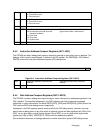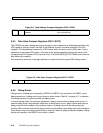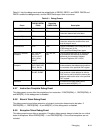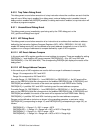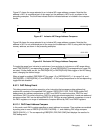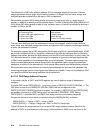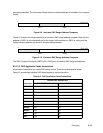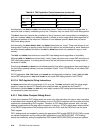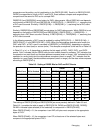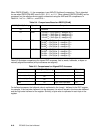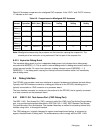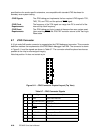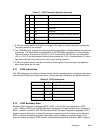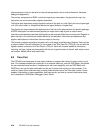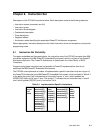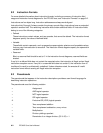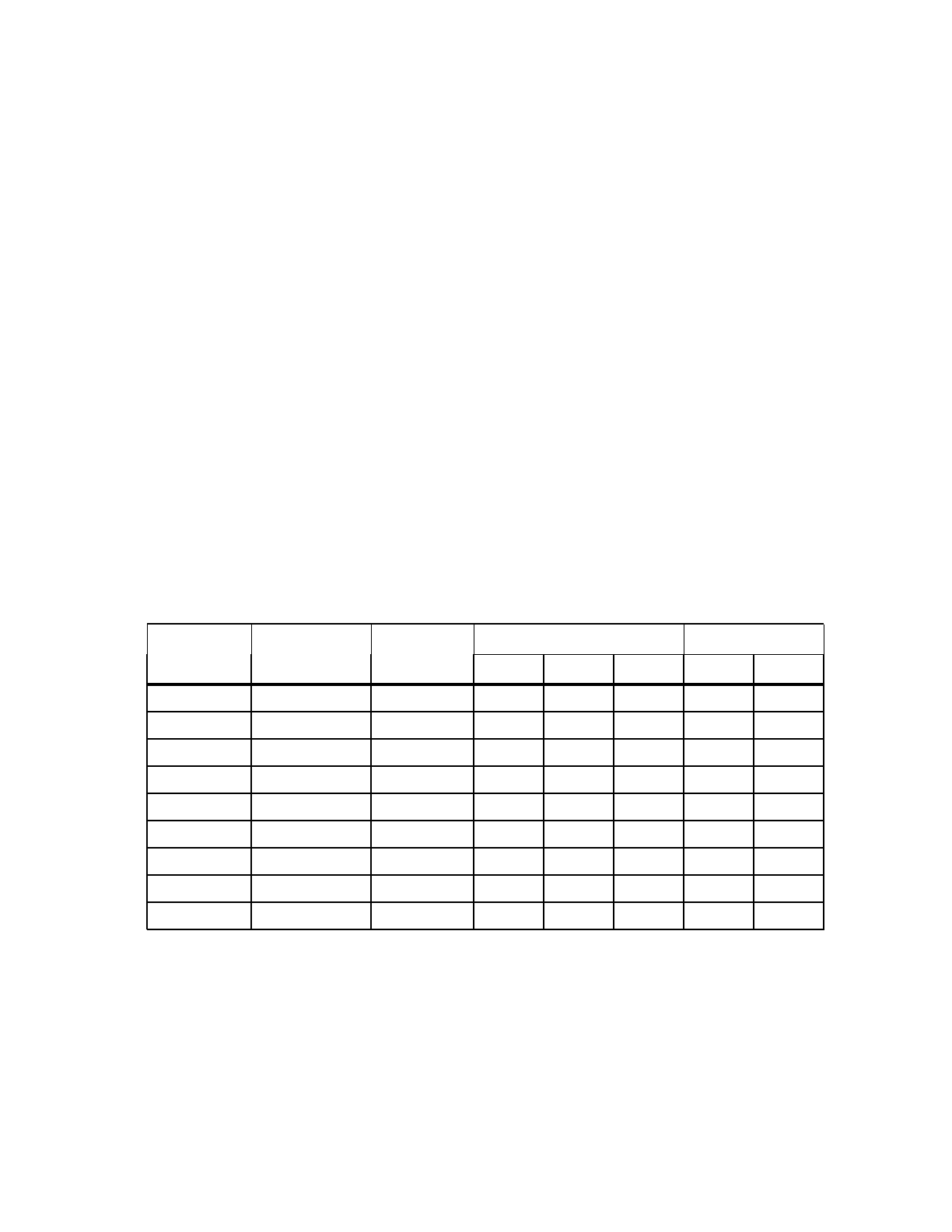
Debugging 8-17
comparison and by setting any bit combination in the DBCR1[DV1BE]. Each bit in DBCR1[DV1BE,
DV2BE] correspondes to a byte in DVC1 and DVC2. Exact address compare and range address
compare work the same for DVC as for a simple DAC.
DBSR[DR1] and DBSR[DW1] record status for DAC1 debug events. Which DBSR bit is set depends
on the setting of DBCR1[D1R] and DBCR[D1W]. If DBCR1[D1R] = 1, DBSR[DR1] = 1, assuming that
a DVC event occurred. Similarly, if DBCR1[D1W] = 1, DBSR[DW1] = 1, assuming that a DVC event
occurred.
Similarly, DBSR[DR2] and DBSR[DW2] record status for DAC2 debug events. Which DBSR bit is set
depends on the setting of DBCR1[D2R] and DBCR[D2W]. If DBCR1[D2R] = 1, DBSR[DR2] = 1,
assuming that a DVC event occurred. Similarly, if DBCR1[D2W] = 1, DBSR[DW2] = 1, assuming that
a DVC event occurred.
In the following example, a DVC1 event is enabled by setting DBCR1[D1R] = 1, DBCR1[D1W] = 1,
DBCR1[DA12] = 0, and DBCR1[DV1BE] = 0000. When the data address and data value match the
DAC1 and DVC1, a DVC1 event is recorded in DBSR[DR1] or DBSR[DW1], depending on whether
the operation is a load (read) or a store (write). This example corresponds to the last line of Table 8-3.
In Table 8-3,
n
is 1 or 2, depending on whether the bits apply to DAC1, DAC2, DVC1, and DVC2
events. “Hold” indicates that the DBSR holds its value unless cleared by software. “RA” indicates that
the operation is a read (load) and the data address compares (exact or range). “WA” indicates that the
operation is a write (store) and the data address compares (exact or range). “RV” indicates that the
operation is a read (load), the data address compares (exact or range), and the data value compares
according to DBCR1[DVC
n
].
The settings of DBCR1[DV1M] and DBCR1[DV2M] are more precisely defined in Table 8-5 and
Table 8-6. (
n
enables the table to apply to DBCR1[DV1M, DV2M] and DBCR1[DV1BE, DV2BE]).
DV
n
BE
m
indicates bytes selected (or not selected) for comparison in DBCR1[DV
n
BE].
When DBCR1[DV
n
M] = 01, the comparison is an AND; all bytes must compare to the appropriate
bytes of DVC1.
When DBCR1[DV
n
M] = 10, the comparison is an OR; at least one of the selected bytes must
compare to the appropriate bytes of DVC1.
Table 8-3. Setting of DBSR Bits for DAC and DVC Events
DBCR1 DBSR
DACn Event DVCn Enabled DVCn Event [DnR] [DnW] [DA12] [DRn] [DWn]
0 — — — — — Hold Hold
— — — 0 0 — Hold Hold
1 0 — 0 1 — Hold WA
1 0 — 1 0 — RA Hold
10—11—RAWA
1 1 0 — — — Hold Hold
1 1 1 0 1 — Hold WV
1 1 1 1 0 — RV Hold
11111—RVWV



